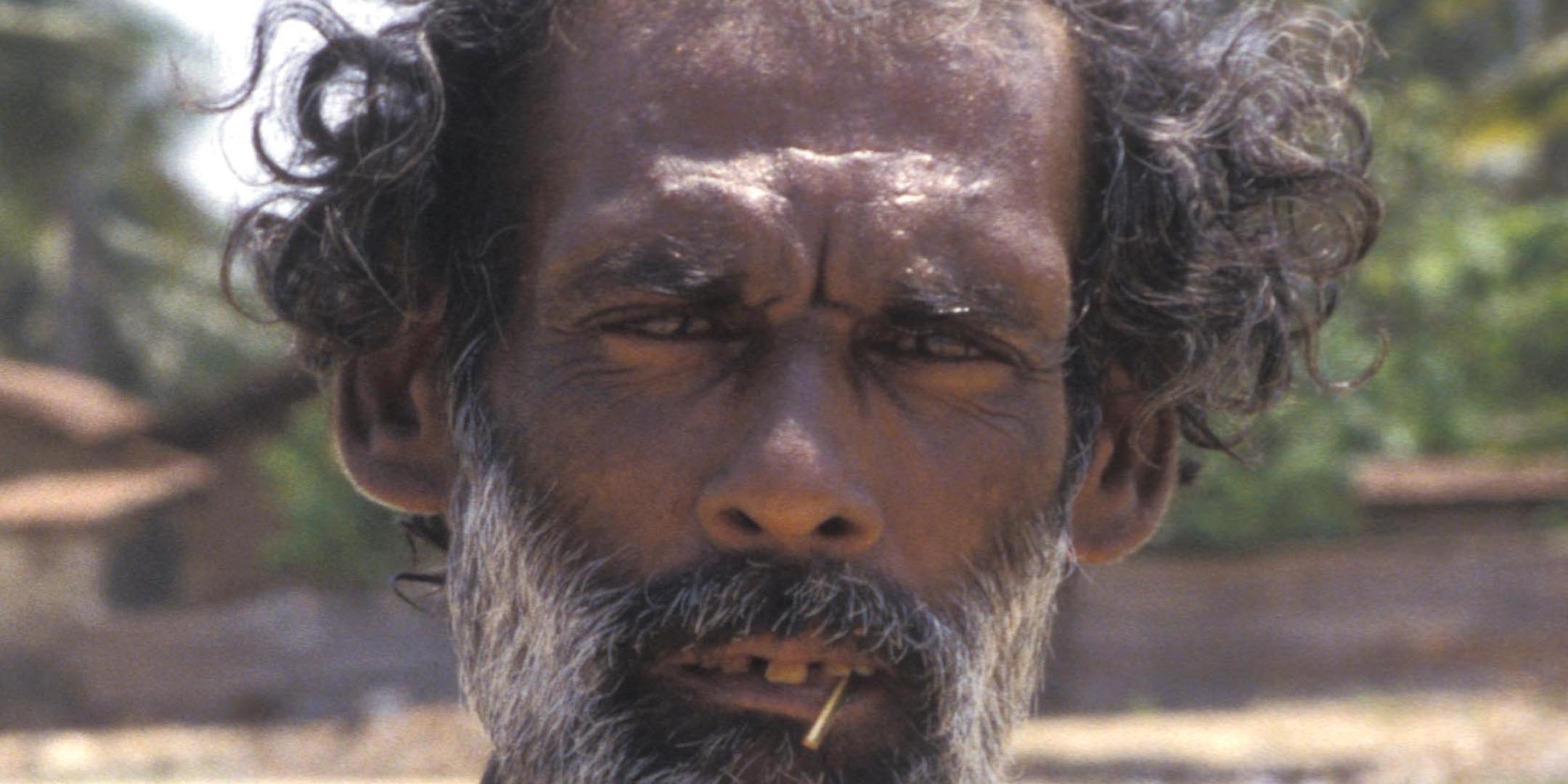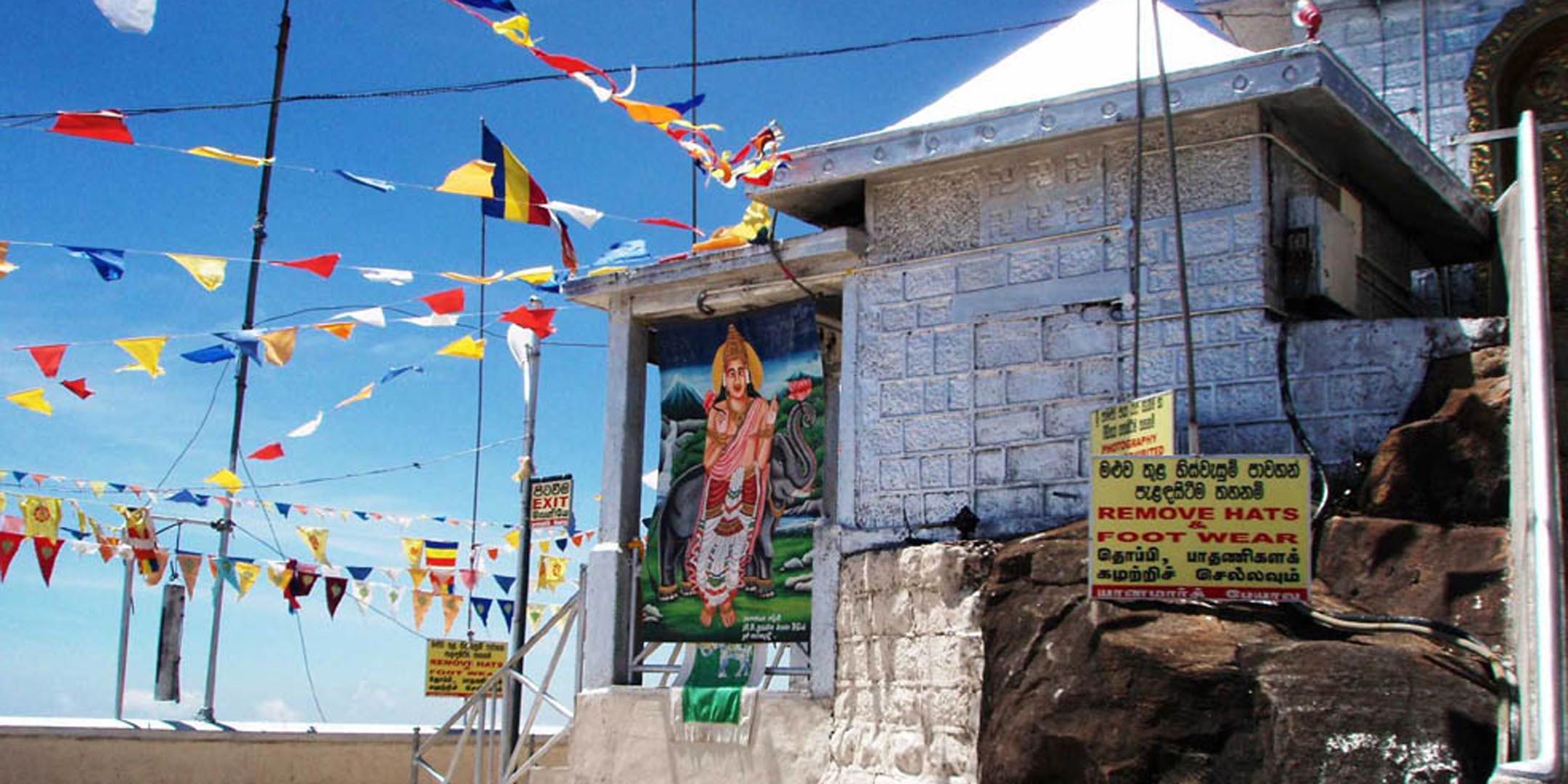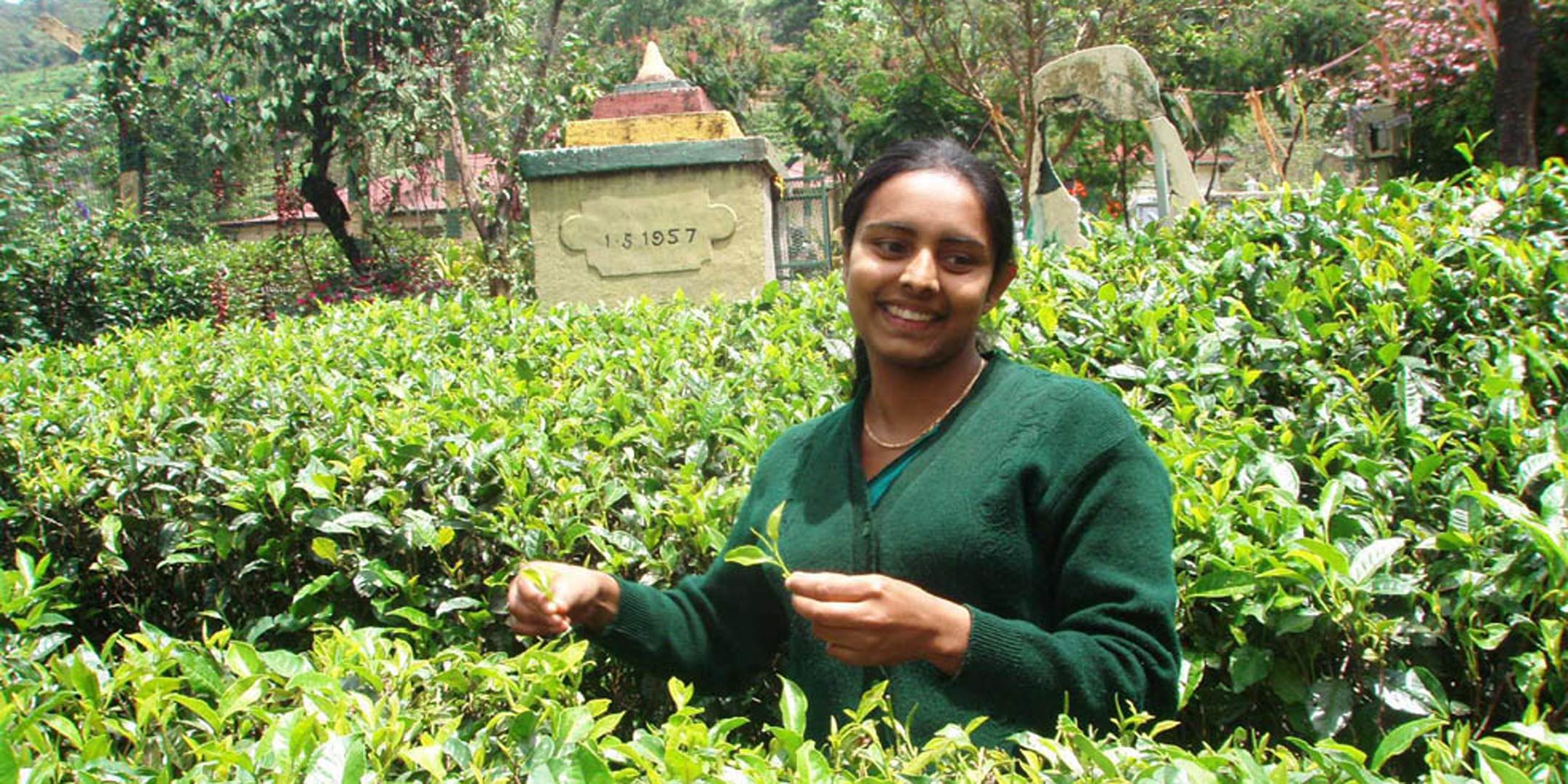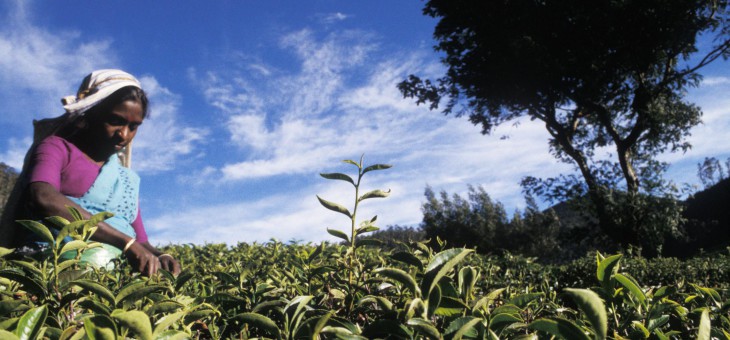
In one of the innumerable inlets on the west coast of the island of Srí Lanka lies the fishing village Negombo. The local fishermen, just like their distant ancestors in the period described by the author of the 2000 year – old legends of the Ramayana, sail out to sea each morning to pursue their trade on catamarans skillfully carved out of huge tree-trunks.
“Come and visit my humble dwelling,” I am requested on my walk through the village. The aroma of dried fish, the sun at its zenith and the red scorched sand under my feet has tired me out, and I accept the invitation without much hesitation. My host is called Warnakulasooriya Hernandez and he is a member of the Christian minority on the island. His forebears were christened in the times of the Portuguese voyages of discovery and colonization, which brought mass (whole village) baptisms.
In a hut built of bamboo stems and palm leaves stuck together with clay, a kerosene burner was glowing and the sound of boiling water began to rattle from a tin pot that I believe was the only metal article in the “house”. The master of the house through in a handful of scented black tea, broken into very small pieces. “This is fresh milk and a little cane sugar, if you please,” I learn from the mistress of the house, who has come to take a look at me but after a moment vanished to tell her relatives in the neighborhood that they have a rare visitor from somewhere or other.
„This tea is grown at high altitudes in the heart of the island, at around 2,000 meters above sea level near the Adam Mountain. That was were Adam came down from Heaven to Eden and he first touched earth at the very summit. But the tea in this area is called after the highest situated town Nuwara Eliya, which in Sinhalese means “town of radiance”. “Tea is cultivated in other places as well,” my hosts informs me. “Don’t forget to try the tea from the area called after the ancient town of Kandy, which is classified as a “low mountains” tea.” Then he went on: “While the teas from the high mountains produce a lighter brew, the lowland teas are very dark and you must put a little milk and sugar in them. Teas from the Uva or Haputale areas are of outstanding quality, and this is mainly to do with the South-West monsoon, and so the best harvest is in the August-September season. By contrast the harvest in the Dimbula and Dickoya areas is dependent on the North-West and the best quality is to be picked in the January-February season.” While my host has been speaking the hut has filled up with several men and mainly a quantity of children, who after a while are shooed back over the threshold. The tea has been poured into small ceramic bowls and the tea extract that has formed in the tin pot has been diluted with boiling water.
The next to speak, as it later turned out, was the eldest of the brothers. „I hope that on your tea travels you will also visit the summit of Sumanakúta.” (2243 meters above sea-level, author’s note). „And where is that?” I pretended to be scared, since I had a feeling: „Buddha once came to this country to turn the wicked cannibal tribes – the Rakshashi – to the true faith. To show his supernatural power and ability to transport himself anywhere, he put one foot north of the royal city Anurádhapury and the second foot on the top of the mountain I mention. In both places he left a deep footprint (the two places are about 170 kilometers from each other). In the 1st century BC King Vattagámani had a Buddhist monastery build at the place of the print by the royal city, and both these footprints of the „Enlightened One” are much venerated.”
„But that is the summit of the same mountain that: “I started a joke, anticipating the reactions of those present. „Yes indeed, and the Hindus believe that the summit of the mountain is a holy place too, where their highest deities live,” the answer came back, confirming my view that I was witness to the purest example of religious tolerance.
But I had not yet heard enough and so I asked: “And what about Muslims?” “There are also a lot of them living here and they are mostly descendants of traders of long ago with spices and precious stones, who settled here for good, especially on the coast. You won’t find them in the interior. There the majority are Indian Tamils, who were moved here by the British to work on the tea plantations,” explained my host, and poured the rest of the fine black tea into the earthenware bowl.
Later, sitting in the bus taking me to the interior while the driver had to use all his skill to avoid the trucks full of fresh tea chests, I noticed the signs on the truck sides. From the names of companies like AKBAR Brothers, ISMAIL T.A.M., and ABDUL HUSEIN & Sons it was clear that the descendants of the old Arab traders were still doing lively business today.
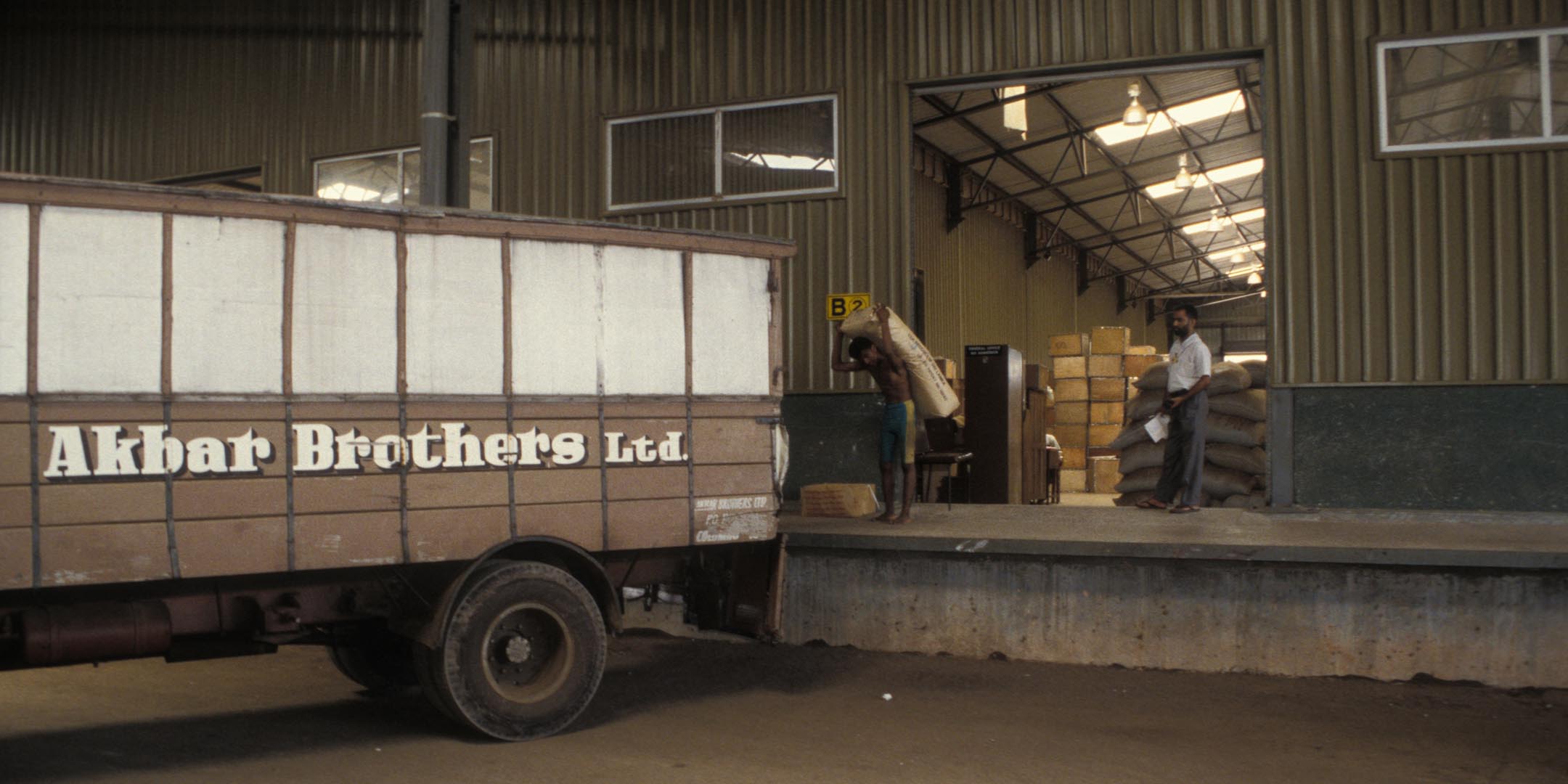
James Taylor – the British tea pioneer – in 1867 farsightedly planted the first 19 acres of tea plants in the garden of Loolencondera, a move thoroughly justified by the results, and the fact that a century later the island Lanka was to earn the suffix Srí, meaning “brilliant” or also “fortunate”.
The tea-plant at the time became a symbol of religious harmony. How else could the plant be regarded when it was picked on the land of the Buddhist Sinhalese, processed by the nimble hands of the Hindu Tamils and then transported to the tea-houses of Christian Europe by Muslim traders?
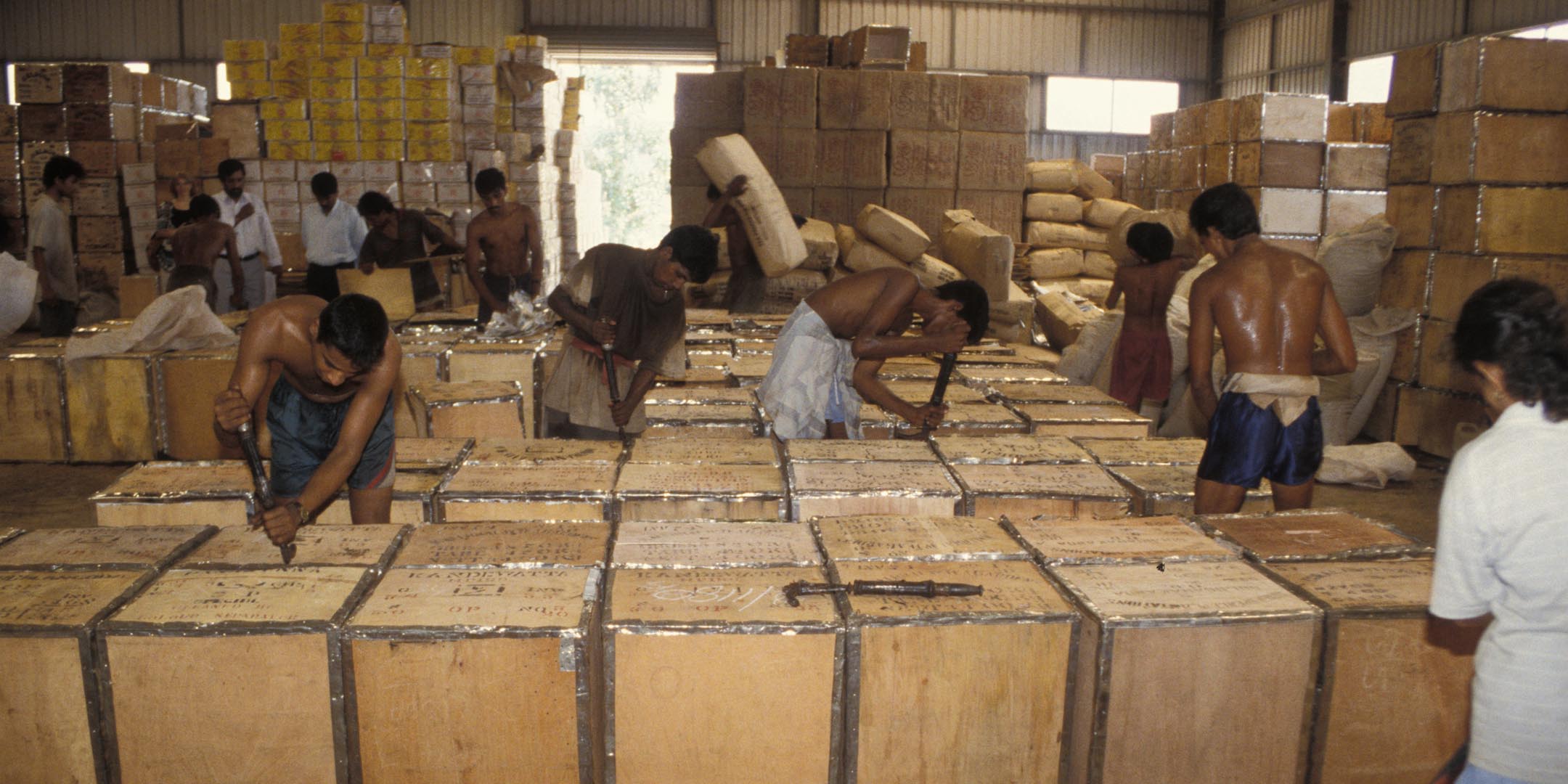
Time cannot, however, be held back and for a long time now Srí Lanka has not been as fortunate as its inhabitants wished for it in the times when the local tea was still called Ceylon.

